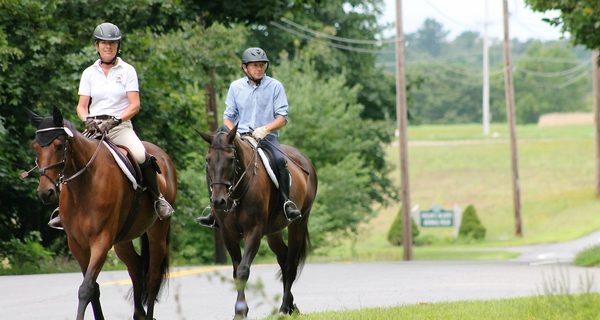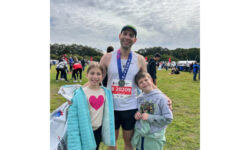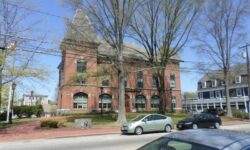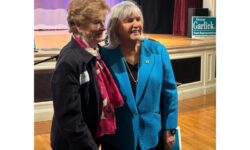The hunter pace itself began with a ride into the woods just in front of the dilapidated white farmhouse on Cottage Street.
By James Kinneen
Hometown Weekly Reporter
The third time was the charm on Sunday morning for the Norfolk Hunt Club’s Hunter Pace, which began and ended at the Medfield State Hospital. But while two prior cancellations took their toll on the number of riders that participated, the event’s unique historical connections and tremendous views of the Charles River meant it could only be a huge success.
Three years ago the Norfolk Hunt Club held a similar hunter pace in the same area around the Medfield State Hospital, but that looping trail was really only on one side of the Charles River, while this year’s event went on both sides.
But while the tremendous views of the river were obvious to anyone riding on the trail, Norfolk Hunt Club member Gil Rodgers explained that the history of the area is what really make this event stand out.
“It goes through a number of very, very important historical farms and estates, so it’s important for the historical purposes,” Rodgers explained when pressed on the eight-mile trail, which most riders complete in around two hours. “And it’s also very important because it’s a crossroad of a number of trails. So, we’re using a number of different trails and connected them together.”
Essentially, in a hunter pace, teams of riders are tasked with matching the time that a fox hunt would take to ride the same trail. The winners are not the fastest riders, they’re the teams that come closest to the “correct” time as determined by the event coordinator (with no actual hunting of any kind of animal involved).
“A skilled and experienced team of riders went out yesterday and rode the course to get an optimal time. So, it’s not a race, it’s a pace, and it’s supposed to mimic what it’s like to be in an actual fox hunt where you would gallop and trot, and then you stop and wait, so it’s not just riding as fast as you can. Good riders will tend to ride it too fast.”
The riders were sorted into three classes, determined by speed and willingness to go over the fifteen optional jumps on the course, the tallest of which was 3'6" tall.
“There are three classes of riders: the first flight, which are jumpers who are supposed to jump pretty much all the jumps; then the second class is called flats, who can jump if they want but don’t have to; and then the third class is called hilltoppers, who are the slowest riders. For each of those classes there are six ribbons awarded.”
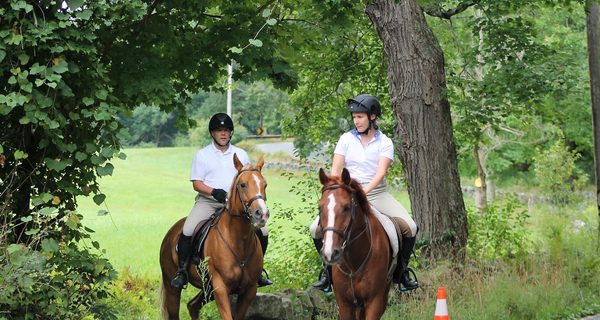
In case riders might not be familiar with the importance of the areas they were riding through, they were provided with a map of the loop on one side, and a listing of the places of historical importance on the other. Highlights of the course included the Leverett Saltonstall Farm, which traces back to the former governor of and senator from Massachusetts, and features three horse trails which are only open with permission from the club, as well as The Lewis Estate, which featured the 3'6" jumps, as that was the historically normal height for Norfolk fox hunting.
Rodgers explained that the longtime connections between the Norfolk Hunt Club and those family estates were pivotal in creating the Hunter Pace Trail, and played an enormous part in making the event unique.
However, because the club holds so much reverence for these estates and so cherishes these relationships, the club used extra caution in determining that they needed to postpone the event twice, in large part out of fear of what horses could do to the wet grounds around those beautiful homes.
“The reason we postponed it the first time was because of the flooding of the Charles River, so those trails got very muddy. And because we’re going across farms and beautiful estates and homes, if you have sixty horses going through there it could really chew up the land, so we’re really risk-averse.”
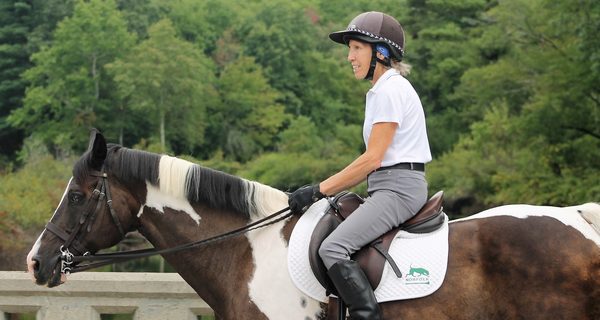
Unfortunately, with those postponements, the number of riding teams dropped from the 62 that had signed up at one point to 36 teams of riders that could make it on Sunday morning. Rodgers also explained that this pace was held earlier than most (it started at 7:30 a.m.) because they feared the heat, and thought people that would be riding for about two hours in the sun would like to get out before the afternoon heat.
While its being both a distanced event and an outdoor activity makes horseback riding a very COVID-friendly way to spend an afternoon, Rodgers explained that the virus forced Hunter Paces to cut out the “teas,” essentially the social aspect of the paces where riders typically gather together and socialize after completing the trail ride.
Instead, the socialization will have to be done online, where riders will likely share GoPro videos they filmed from their helmets, tales of stunning views of the Charles River the public never gets to see, and sympathy for those teams that missed out.




